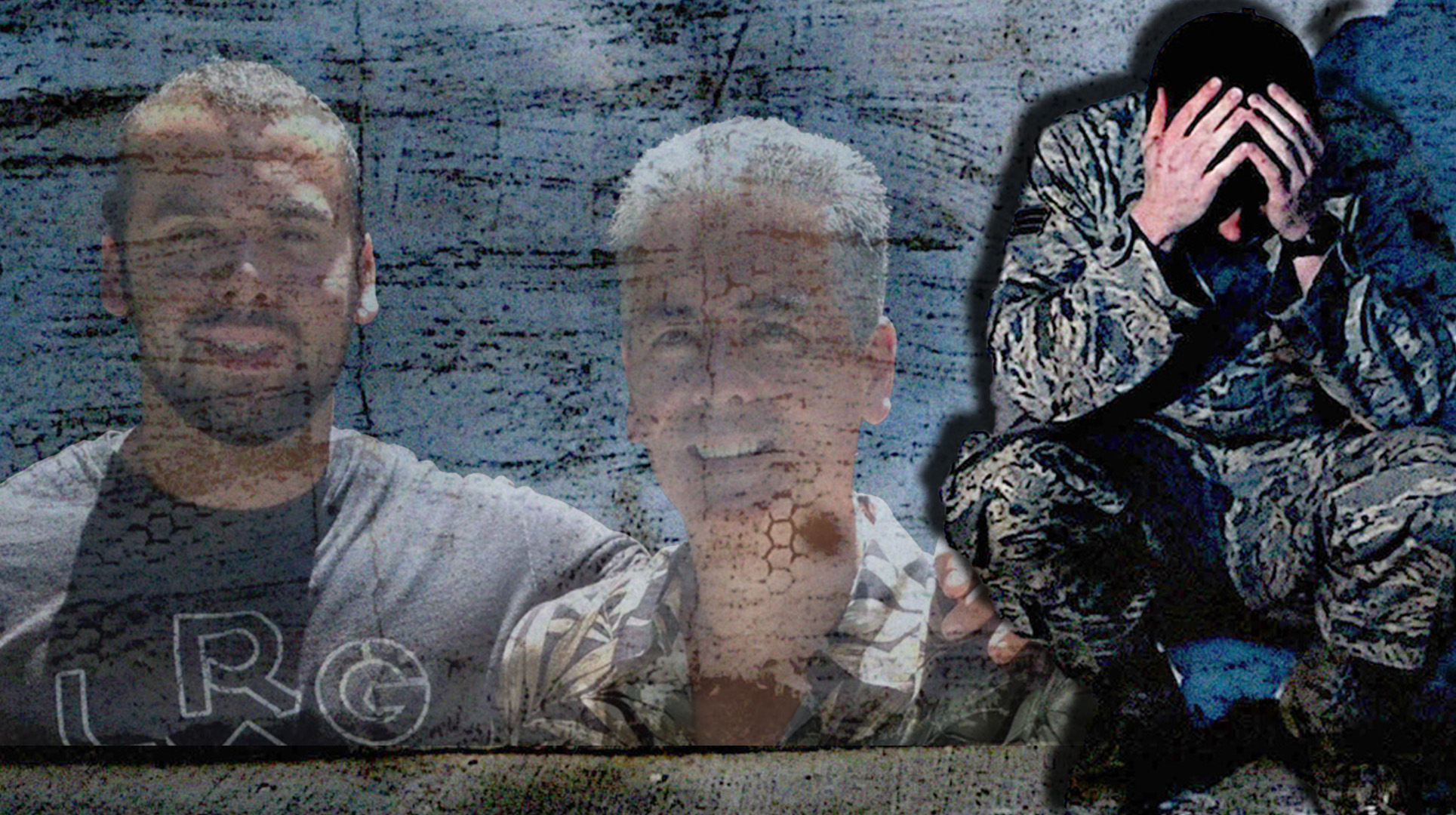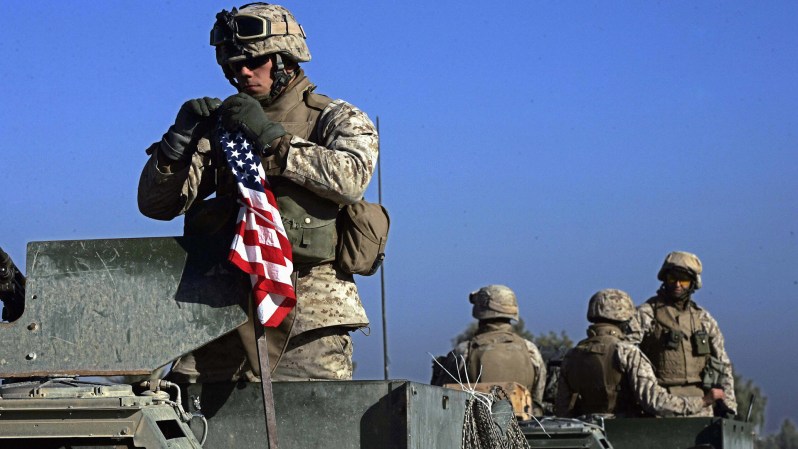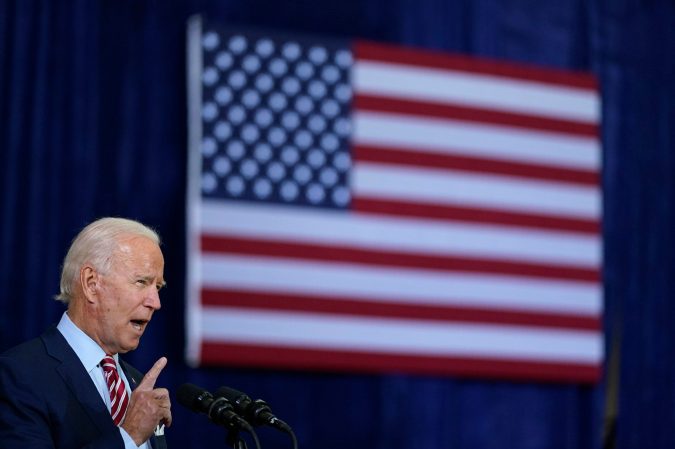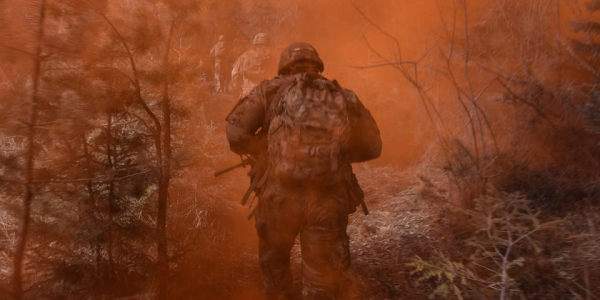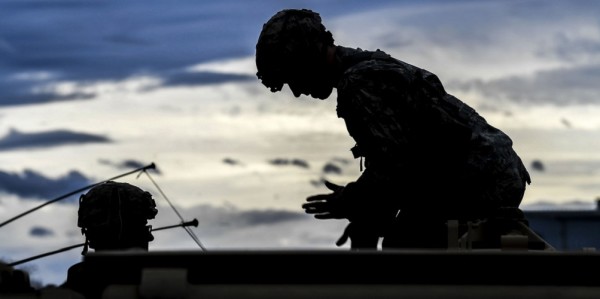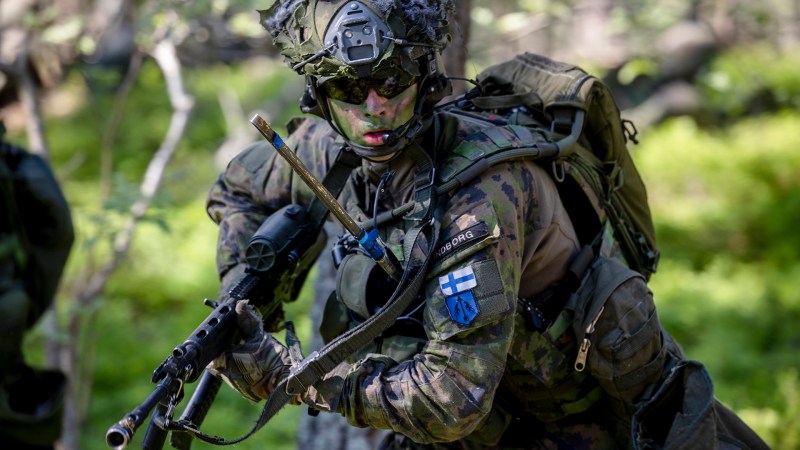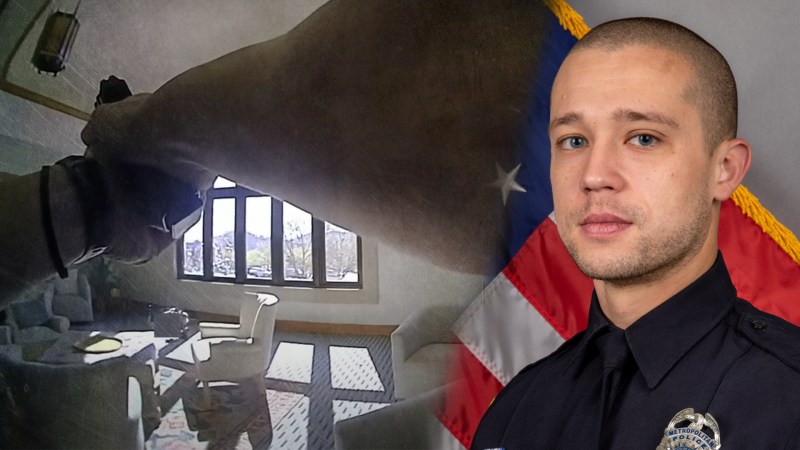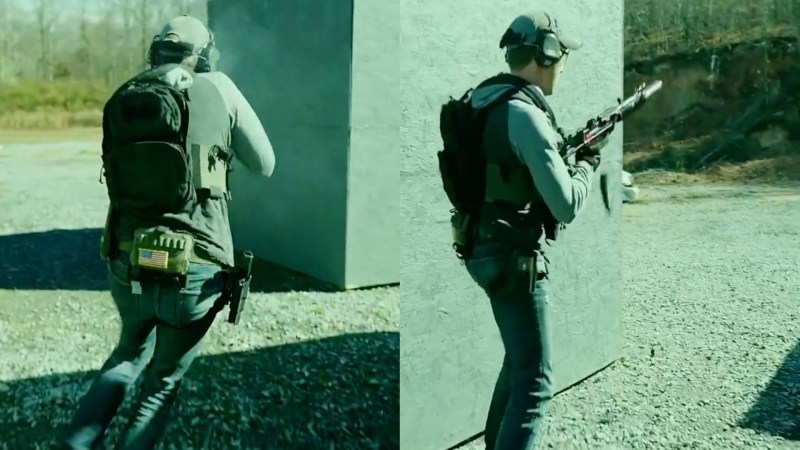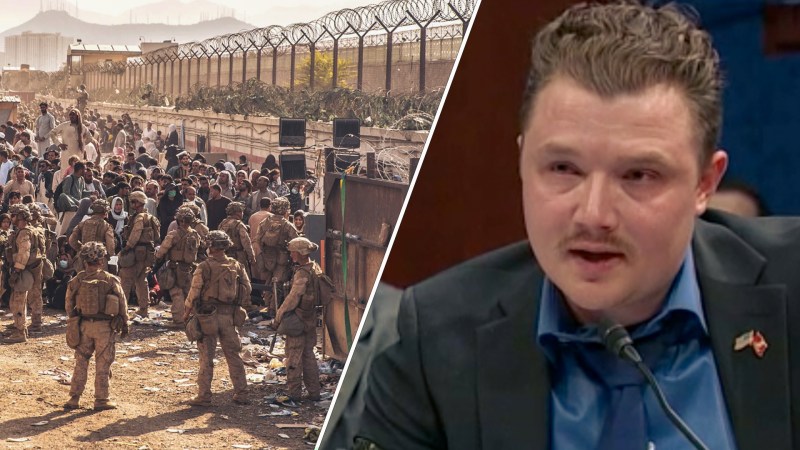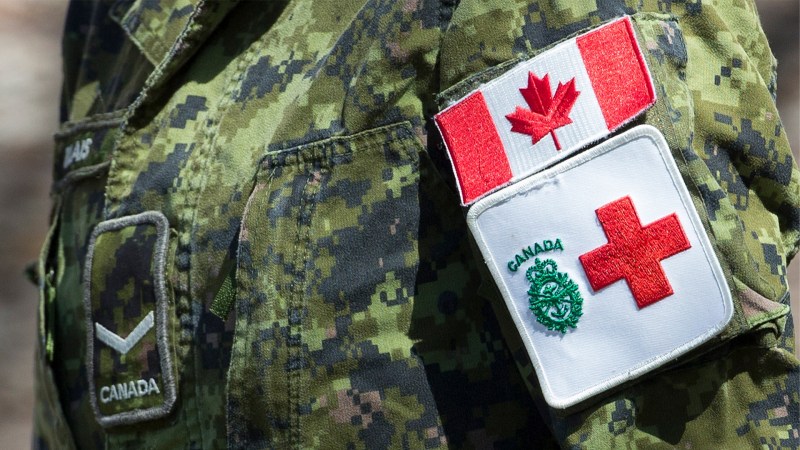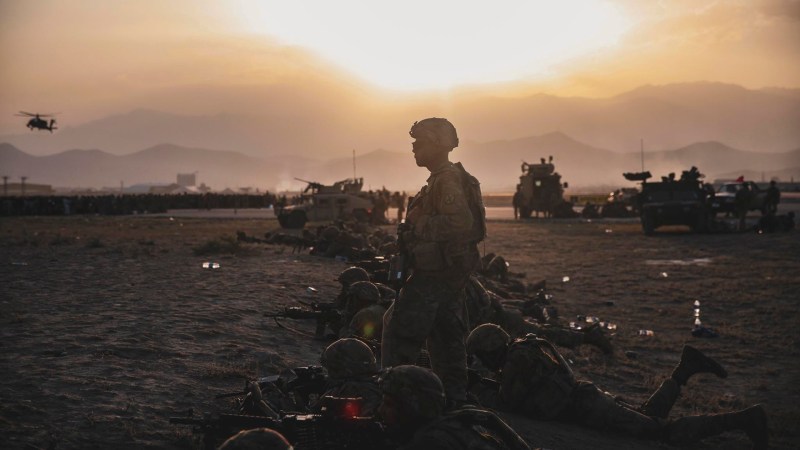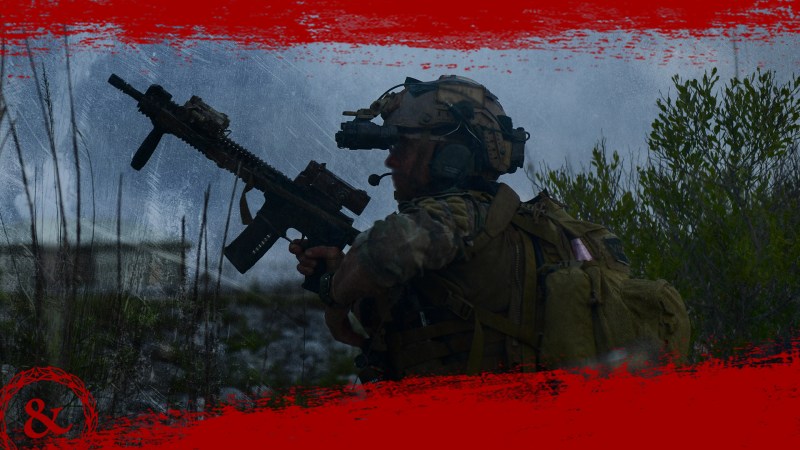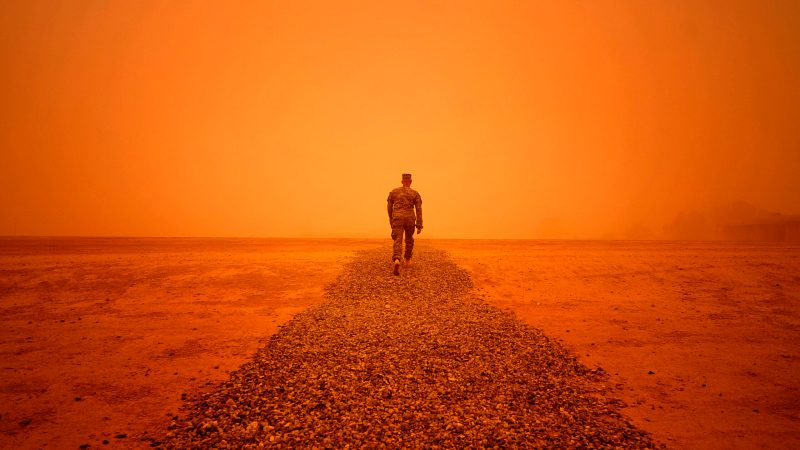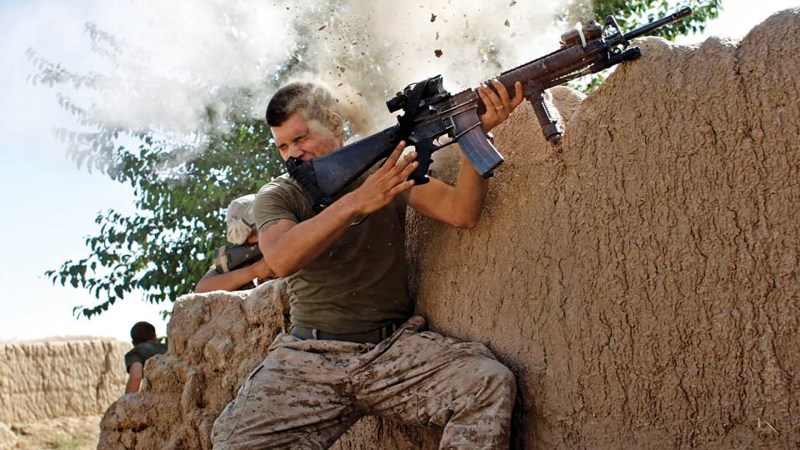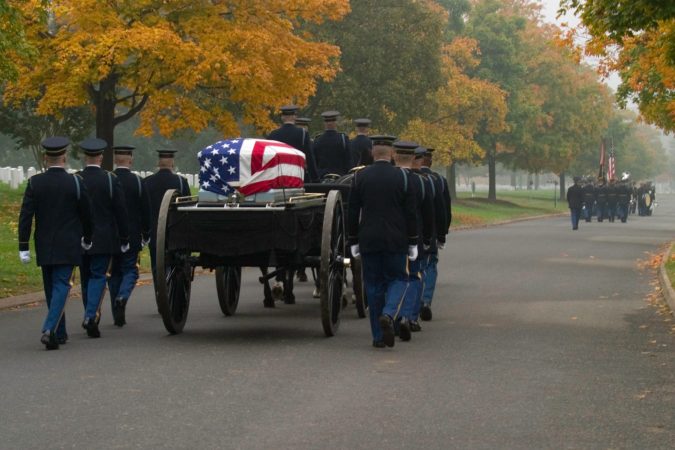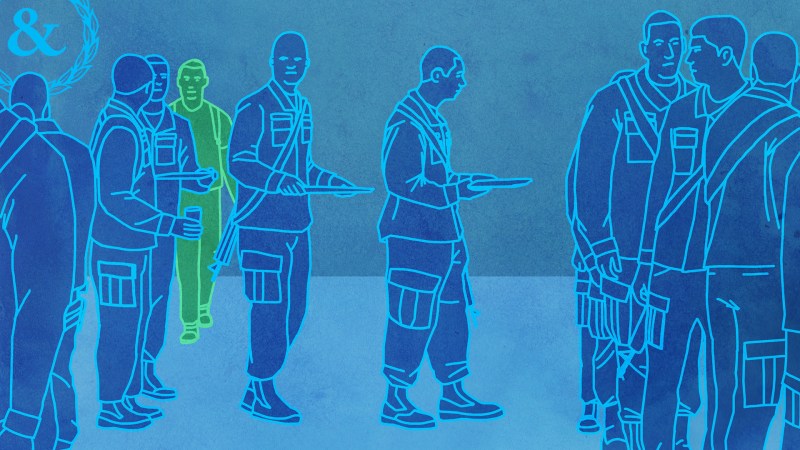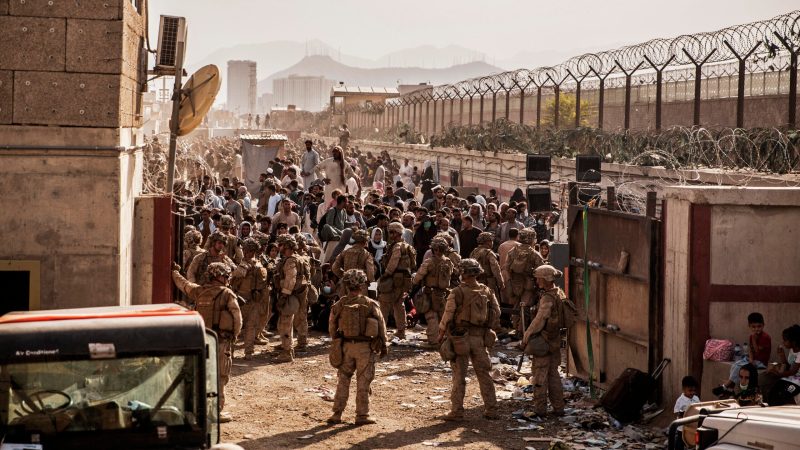“Daddy, are you okay?”
Former Army bomb tech Jeff Haugland knew the exact answer to his four-year-old son’s question: no.
No, he was not okay, and the gun in his hand ― pointed at his temple ― was proof. It was the middle of the night in 2015, but for Haugland, it felt more like the end of the line.
The pills that doctors had prescribed for his headaches and insomnia weren’t working anymore. Neither was Haugland’s nightly fifth of whiskey he drank to numb the physical and mental pain of multiple traumatic brain injuries (TBI).
In his mind, there was only one way out, one that more than 6,000 U.S. veterans choose every year in the modern warfighting era: suicide.
But then came his son’s 2 a.m. knock at the door. With a gasp, Haugland saw his situation with startling clarity: If he pulled that trigger he would be no different than his 36 friends who had killed themselves. And he would be passing on all of his military- and deployment-connected trauma to his son.
Haugland ― and all the TBI-related insights his damaged brain could offer ― would simply become another statistic.
“I think maybe he heard me sobbing, because his room is right across the hall,” Haugland said. “All I could think afterward was that my son would have walked in on me bleeding out and would have had no idea what to do.”
Haugland’s son would not have been alone. Despite fervent efforts of lawmakers, military leaders, charities, and military families, the veteran suicide rate for those ages 18 to 34 has increased by 95.3% since 2001. Nearly half a million servicemembers have been formally diagnosed with a TBI in the same time period. Untold more have one, yet may not know.

But Haugland believes his story offers a key insight into the rising statistics, and many who specialize in traumatic brain injury work agree. Haugland’s physical and mental decline that ended with his son knocking on his door began with his head injury and the TBI behind it. And TBI, experts believe more and more, is a crucial piece of the puzzle behind veteran suicide rates.
Address those injuries, the theory goes, and watch the suicide rate decrease.
It’s time, military advocates say, for the TBI and veteran suicide worlds to meet on the battlefield.
Uniquely fragile brains
Dr. Carol Henricks, an Arizona-based neurologist, has treated hundreds of veterans over the past two decades while conducting research into TBIs and associated behaviors. The human brain, she said, is a very sophisticated organ ― and simultaneously very fragile.
“You do not have to strike your head against anything in order to have a TBI,” Henricks said. “It comes from the shaking of your brain inside your skull.”
Our brains float inside our heads in cushioning cerebral fluid, Henricks said. When someone receives a hit to the head ― not only through obvious means like a fist or a fall but also through intense shock waves like those made in combat by grenades, bombs, and other explosive devices ― the brain smashes against the skull. Depending on the force, the soft brain tissue damage can range from mild to severe, potentially leading to a cascade of negative health effects.
One of those, research shows, is suicidal ideation.
Henricks has studied how TBIs work at the brain’s cellular level. “You have diffuse axonal injury, where the brain’s long connective nerve fibers are sheared away. You have trauma to the myelin fatty coating around the nerves. You pull apart the synapses, which are the cell-to-cell connections in the brain,” Henricks said. “You also disturb the metabolic environment around the neurons. You have all these electrically-charged particles around the neuron facilitating electrical signaling.”
That signaling, she said, is how brain cells function together. “So when you disrupt that, you disrupt the ability of the cells to communicate,” she said.
For Haugland, that disruption began during his 20 months in Iraq and Afghanistan as an EOD technician. On one mission, he was standing two feet from a blast that took off part of a buddy’s hand.
“You would think in a community with blast exposure, we would be educating the guys coming up a little earlier about the true risks of TBI, but we just never talked about it, ever,” Haugland said. “In military culture, the tendency among your peer group is to shun the injured, because it’s really hard to do your job, and you feel vulnerable.”
“You lose a lot of support from guys that are supposed to be shoulder to shoulder with you.”
As his brain cells short-circuited, he endured chronic insomnia, migraines, irritability, and emotional dysregulation. He wasn’t himself.
But it’s not just teammates and co-workers who have been shunning those with TBI in the military. It starts with a basic overall lack of awareness from the top down, not only in Washington, D.C. but also in the American public.
What the sport of football learned the hard way
After decades of denial, the public suicides of past superstars, and a series of lawsuits, the National Football League has embraced TBI science, spreading awareness into the mainstream. The League is implementing new concussion protocols and investing in new head-protecting technology. The trickle-down across the culture has even produced popular films like Concussion, about the doctor who first discovered Chronic Traumatic Encephalopathy (CTE) in football players. A survey released in 2015 ― the same year Concussion hit theaters ― showed that a full quarter of parents forbid their children from playing contact sports for fear of concussion-related health problems. NFL legend Brett Favre even warned parents in 2021 to keep their kids from tackle football until at least age 14.
But as TBI issues in football become well known, Haugland, Henricks, and others connected to American servicemembers are wondering: when is it the military’s turn?
Frank Larkin has been asking that question ever since his son, Ryan, took his own life in 2017. Frank Larkin was a Navy SEAL before eventually becoming a Secret Service deputy assistant director and U.S. Senate sergeant at arms. Ryan followed his father into the SEALs and completed four combat tours in his decade in the Navy, experiencing countless nearby explosions as he worked as a combat medic, sniper, and explosives breacher.

He killed himself with a single shot to his chest, right through his SEAL team shirt. In a note he left behind, Ryan requested that his brain be studied. He was convinced, his father said, that his wrecked brain was the main problem.
“He said, ‘Something’s wrong with my head, but they’re all telling me I’m crazy,’” Larkin recalls. “Two months later, after his death, they said our son suffered from a severe-level microscopic brain injury uniquely related to blast explosion. So he died from combat injuries, he just didn’t die right away.”
This sort of “blast TBI” is different than the CTE of professional football, though they share several symptoms, including suicidal ideations. Larkin threw himself into TBI research, especially as it relates to suicide. He became COO of Troops First Foundation, a veteran-focused nonprofit, as well as chair of the Warrior Call initiative, dedicated to connecting isolated service members with other veterans and their surrounding communities. And he began vocally calling for the military and DoD to study the connections between TBIs and suicidal behaviors.
“When you talk to these suicide prevention experts, they don’t even mention TBI, or they blow it off. It’s not real to them,” Larkin said. “We’ve got to open up and let science enlighten us because my son should be alive today if they had just done the right thing for him,” such as aggressively diagnosing and treating Ryan’s TBI.
Thankfully, there are small but encouraging signs that the DoD is beginning to agree.
Changed mission
In 2012, Geoffrey Dardia founded the SOF Health Initiatives Program for the Task Force Dagger Foundation, a military nonprofit focused on assisting wounded, ill, and injured special operations forces and their families. Still a Master Sergeant in the active-duty Army, Dardia oversees the Human Performance and Wellness initiatives for a Special Forces unit at Fort Liberty, North Carolina.
“The first SOF Truth is humans are more important than hardware, but our hardware gets more checks and services than our humans — you can use analogies from weapons systems, aircraft, or vehicles,” Dardia said. “So when you are feeling that migraine, depression, fatigue, lack of concentration or other symptoms, those are your check engine lights. If you don’t do that diagnostic assessment and put tape over the check engine lights and continue driving down the road at 100 miles an hour with only prescription drugs to help, the wheels will fall off and the hood will blow open.”
Dardia knows exactly what he’s talking about. Besides the pain of three close military buddies who took their own lives (all of whom had confirmed TBIs), he “wanted to start sucking a pistol” himself beginning in 2009. He had just returned from his third deployment to Afghanistan as a Green Beret. While deployed, he’d been exposed to blasts from high explosive breaches, rocket-propelled grenades (RPGs), IEDs, hand grenades, and large demolition charges. Additionally, he had been knocked unconscious in training by two horrible landings while parachuting.
His TBI came with a litany of symptoms, including suicidal ideation. “I didn’t have a [suicide] plan; it was just like I’d do everyone a favor if I wasn’t here because I felt like a burden,” Dardia said. “I knew it wasn’t the right answer, but I can completely understand why people do it.”
Subscribe to Task & Purpose Today. Get the latest military news and culture in your inbox daily.
The father of a teenage daughter, Dardia eventually found healing through functional medicine, including alternative therapies like testosterone replacement, hyperbaric oxygen, vestibular rehab, chelation, and photobiomodulation. He also became one of the first Special Forces soldiers to go through the National Intrepid Center of Excellence (NICoE), a Walter Reed-based network founded in 2010 and dedicated to troops with TBI.
Several other military-focused TBI programs have popped up in the last decade, including the DoD’s Warfighter Brain Health Initiative, the Rudd Institute for Veteran & Military Suicide Prevention at the University of Memphis, and the Transforming Health and Resilience in Veterans (THRIVE) program at the University of North Carolina. Countless more charities and foundations zero in on military families living with the effects of TBI, especially the Special Forces community.
Partially thanks to what he learned about his body at NICoE, Dardia became passionate about the interplay between military activities like combat and the human brain. When he finally emerged from his mental and physical fog, he knew he had a new mission: change the way the military tries to prevent suicides amongst its servicemembers.
“Everyone [in the Special Forces community] is fighting a battle you can’t see,” Dardia said. “They were being gaslit by military doctors, just getting pills thrown at them and being called malingerers, but we weren’t trying to get out of anything. When people are being gaslit, they know there’s way more that’s going on than, ‘Hey, you shouldn’t own a gun.’”

Since 2015, at least once a week, Dardia, 46, travels around base-to-base and even in civilian and medical institutions teaching servicemembers ― and those who care for servicemembers ― how to recognize and get help for TBIs. “If you’re going to take yourself into this environment, you need to understand what it’s going to do to you,” Dardia explains. “We can’t treat ourselves like a rental car, because this is the only body we’re ever gonna get.”
The first SOF imperative is “Understand the Operational Environment,” exactly what Dardia is teaching. “You can’t protect yourself from hazards if you don’t know they are there,” he said repeatedly.
The workshops last for three hours and teach servicemembers how to build and maintain resilience. Besides Dardia touching on “Operator Syndrome” (the accumulation of physiological, neural, and neuroendocrine responses from the prolonged chronic stress of combat or other military training), nutritionists and dieticians educate on sleep hygiene, toxic exposure, and the role of a “personal, protective lifestyle” in a troop’s personal toolkit.
Dardia said he feels the nation ― including military higher-ups ― is nearly at a tipping point concerning awareness of TBI and military suicide. He recently attended a Preservation of Force and Family conference where a doctor from Walter Reed Medical Center pronounced on stage that the military’s dependence on pharmaceuticals was the biggest obstacle in suicide prevention among its members.
“We’re there; it’s happening,” he said. “A lot of people [within the military and DoD] are standing up, and they know what right looks like.”
Brandon Act and the future
In May 2023, for starters, the DoD implemented the Brandon Act, a law that, according to a DoD press release, “allows service members to seek help confidentially, for any reason, at any time, and in any environment, and aims to reduce the stigma associated with seeking mental health care.” The act was named after a sailor who killed himself in 2018. Such a move would, in theory, mean that troops with TBI and suicidal ideation could seek help without fear of losing face or career opportunities, as both Haugland and Dardia say they have witnessed.
Retired Air Force Chief Master Sgt. Gregory A. Smith served as the Command Senior Enlisted Leader at the U.S. Special Operations Command (USSOCOM) at MacDill AFB, Florida from 2016 to 2019. Today, in retirement, he is heavily involved in work to promote brain health and human performance.
“The human weapons system is our most critical asset,” Smith said. He said SOCOM began programs in what it calls the Cognative Domain 2020 that will help track and predict TBI in future special ops troops.
The program, he said, is meant to “examine cognitive baseline and surveillance throughout an operator’s career. The use of artificial intelligence and machine learning helps commanders and treatment providers with predictive analytics of those operations and activities that result in a higher risk for TBI.”
Dr. Michael David Rudd, who studies TBI at the University of Memphis said he sees greater awareness among troops about TBI’s effects on the body. “One of the most important indicators is the number of soldiers willing to come forward to address the emergence of mild symptoms, prior to deterioration and related complications,” said Rudd. “Moves like the Brandon Act are steps that reflect genuine change in culture.”
Another doctor, this one a neuropsychologist at UNC’s THRIVE program, points out that measuring success when it comes to preventing military suicides (including in situations where the servicemember has a TBI) isn’t an easy task.
“Suicide prevention efforts are in many ways set up to fail, as any suicide that occurs suggests failures,” said Dr. Wesley Cole. “What is difficult to capture are the prevented suicides. So it may not be accurate to say it’s not working, because we do not know what the rate would be with different or no efforts.”
The slowly changing DoD framing and actions related to TBI and suicide, in other words, may already have made a difference ― but there is no concrete way of knowing.
One thing soldiers Haugland and Dardia do know for sure: they are both still alive, largely because of continual TBI healing and know-how.
To that end, as soon as he retires from the Army, Dardia plans on immersing himself further into the Task Force Dagger Foundation. But he will also still perform TBI and suicide education and outreach for the DoD via contract work. An avid mountain biker, racer, and coach, he has never felt better physically or mentally, he said, because “TBI education is completely worthless if you don’t implement what you learned.”
He feels he has the ear of the spec ops community especially and got to assist the Pentagon with its Warfighter Brain Health Initiative. Most importantly, Dardia wants military members ― and those tasked with caring for them ― to think deeply about the importance, even the mere existence, of brain health and healing in today’s modern warfighting environment.
“You are hardwired to want to be alive, but if you’re constantly running into gunfire, constantly under the massive stress of combat and training, that’s not natural,” Dardia said. “Our bodies were never designed to be constantly bombarded with threats like that.”
Moving on
Haugland is now 40, and the son who saved his life in 2015 is entering his teens. Today he is battling brain cancer while serving as the co-founder and COO of The Invictus Project. The nonprofit is dedicated to treating the root causes of TBI, PTSD, and depression in veterans, collecting data from servicemembers undergoing treatments like HBOT, specialized brain imaging, ketamine infusion therapy, and intranasal stem cell treatment. From the data collection, Haugland and his team hope to show that these alternative treatment protocols not only result in greater patient outcomes but are also more cost-effective than standard TBI and suicide-related health measures like pharmaceuticals.
“Mental health is the only area of the body that doesn’t get any diagnostic evidence before trying to treat it,” said Haugland, who has also been a Tedx speaker on the topic. “Here we have the most complex thing in the universe ― the brain ― and we don’t even bother getting an image of it before prescribing pharmaceuticals. It blows me away.”
Frank Larkin, on the other hand, lives with the cold knowledge that no physiological advancement, like those Haugland and Dardia have experienced, will bring back his son, Ryan. The incremental progress of the DoD is too late for Ryan ― but it may not be for someone else’s son or daughter.
“This is my mission now; Ryan passed the baton to me to sound the alarm,” Larkin said. “This is one of the critical things the DoD needs to do: use the science behind TBIs and suicide to prevent more deaths. These men and women volunteer to protect us and our freedom, and we’re betraying that obligation, that responsibility.”
“But if we can successfully harness that intellectual power I know we have and turn it into a cultural movement in our military, I know we can save the lives of guys and gals who need our help.”
The latest on Task & Purpose
- These are the real-life soldiers behind the characters in ‘Band of Brothers’
- The 5 best books about Navy SEALs — according to Navy SEALs
- Green Berets vs Navy SEALs: Inside the Best Combat Diver Competition
- If the government shuts down, here’s what troops can expect
- 5th Special Forces Group wins 2023 Best Combat Diver Competition

